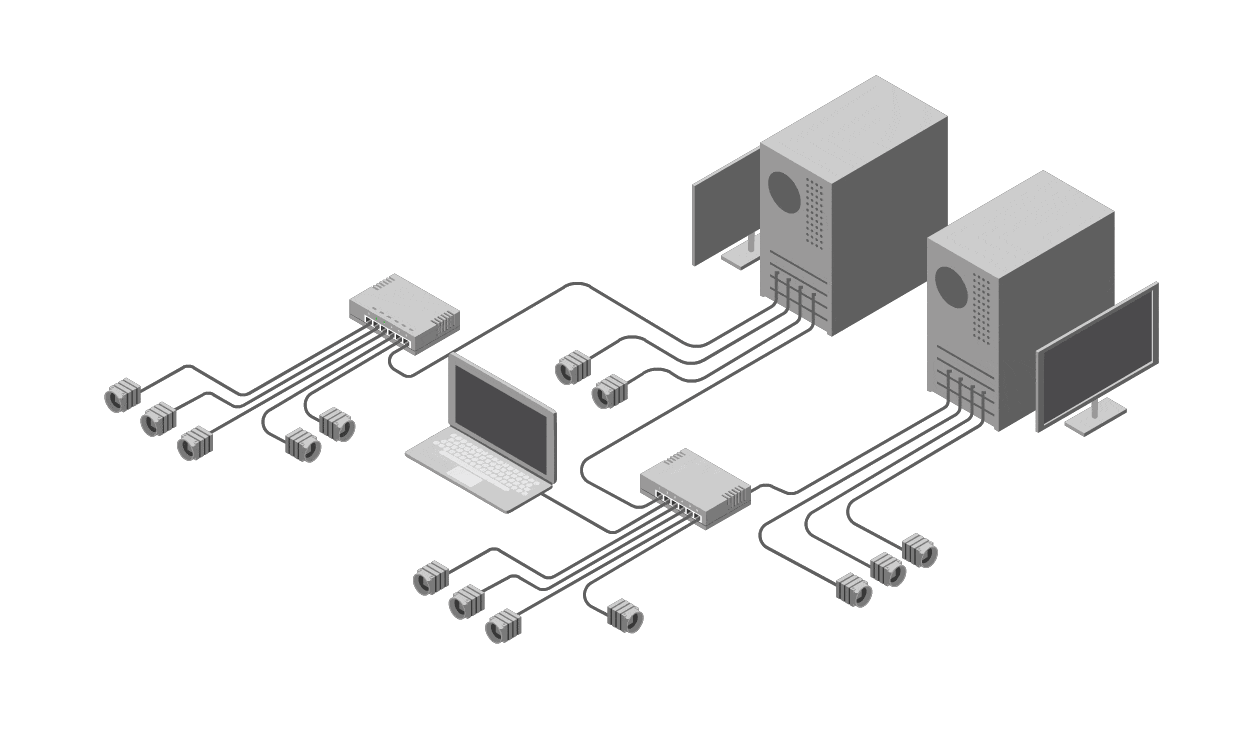☎️Evolving Networks | From TDM to Ethernet & Beyond🗣️
 Ronald Bartels
Ronald Bartels
In the realm of computer networking, evolution has been the name of the game. From the early days of LAN technology to the present, we've witnessed remarkable transformations. This article delves into the journey of computer networking, particularly the shift from TDM (Time Division Multiplexing) to Ethernet, and explores how SD-WAN has stepped in to address the challenges posed by this evolution.
The Rise of Ethernet
Ethernet, a LAN technology, emerged as a key player in networking. While it may not have been the absolute best, its affordability made it an attractive choice. However, when we cast our minds back to the final decades of the previous century and the early years of the new millennium, TDM technologies held sway over WAN (Wide Area Network) connections. TDM was not inherently flawed; it simply wasn't as cost-effective as Ethernet.
TDM possessed some notable strengths—it operated at various speeds, offered end-to-end visibility, and in the frame relay variant, delivered solid Quality of Service (QoS). Ethernet, on the other hand, operated only at specific speeds and managed intermediate speeds through policies. These policies were rather rudimentary, essentially dropping anything exceeding the defined threshold. It lacked the elegance of TDM.
Another significant difference lay in continuity monitoring. TDM exhibited fault tolerance across both near and far ends, whereas standard Ethernet services struggled to provide comprehensive continuity across the entire chain. This discrepancy, while addressable through standards, was seldom implemented.
Moreover, standard Ethernet services lacked a straightforward method for bidirectional QoS, a feature seamlessly available with frame relay technology.
Innovations at iBurst | The Birth of a Solution
A pivotal moment in this journey occurred during my tenure at iBurst in 2009. While working on VoIP quality improvements, I harkened back to my days with frame relay, where we had implemented a QoS scheme that allocated dedicated bandwidth to voice traffic. The results were outstanding. To replicate this success on Ethernet networks, we introduced additional VLANs on the last-mile link, each allocated dedicated bandwidth for voice traffic. The outcome was transformative—it significantly reduced our voice-related issues. Little did I know that this approach would become the industry standard and best practice for many voice providers in South Africa.
However, like any technology, Ethernet had its limitations. Despite its many advantages, it also posed certain challenges. This is precisely where SD-WAN steps into the picture, filling the gaps and providing innovative solutions.
SD-WAN | Bridging the Gaps
SD-WAN offers a versatile solution that can operate at varying speeds, adapt to bandwidth requirements, and provide end-to-end service visibility. In a hub-and-spoke architecture, it delivers practical and bidirectional QoS. While this ability may be limited in a mesh network, the advantages it brings to the table are undeniable.
Another crucial aspect of Ethernet networking is the troubleshooting process. Unlike Token Ring, Ethernet lacks built-in mechanisms for problem reporting. To address this, an intelligent infrastructure is essential, capable of reporting errors and facilitating fault detection. Employing an SNMP poller to aggregate errors and generate diagnostic reports is the common method. However, the available toolset in this domain is somewhat limited, often resulting in wasted manpower as IT professionals chase elusive issues. SD-WAN products can enhance this by reporting faults on network controllers and SFP/SFP+ optics, streamlining the troubleshooting process.
Wrap: Embracing the Network Evolution
As we trace the evolution of computer networking from TDM to Ethernet and beyond, it's evident that each stage brought its own set of challenges and advantages. While Ethernet provided significant advancements, it wasn't without its drawbacks. The introduction of SD-WAN has bridged these gaps, offering adaptability, visibility, and robust troubleshooting capabilities.
In the ever-evolving world of networking, embracing change and seeking innovative solutions is crucial. SD-WAN exemplifies this ethos, promising a future where our networks are not only efficient but also resilient.
Ronald Bartels ensures that Internet inhabiting things are connected reliably online at Fusion Broadband South Africa - the leading specialized SD-WAN provider in South Africa. Learn more about the best SD-WAN in the world: 👉 Contact Fusion
Subscribe to my newsletter
Read articles from Ronald Bartels directly inside your inbox. Subscribe to the newsletter, and don't miss out.
Written by

Ronald Bartels
Ronald Bartels
Driving SD-WAN Adoption in South Africa